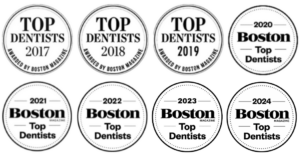Lip and Tongue Ties: What Every New Parent Should Know
When you thought you had enough on your plate as a new parent, you stumble upon a new term—lip tie or tongue tie. You’re not alone if you’re unsure what these terms mean or if your baby has them. Many new parents find themselves in the same situation.
Lip ties and tongue ties are conditions that are present at birth. They involve the tissues that connect the tongue to the floor of the mouth and the upper lip to the gum. These tissues, known as the frenulum, are typically thin and flexible.
However,the frenulum is unusually thick or tight in babies with lip ties or tongue ties, restricting movement. This can lead to problems with breastfeeding, speech development, and oral hygiene.
So, how can you tell if your baby has a lip or tongue tie? Here’s what you need to look out for.
What to Watch Out For
For breastfeeding mothers, the first signs of a potential lip or tongue tie may arise during nursing. You may experience painful nursing, sore nipples, or mastitis—an infection of the breast tissue.
Your baby might also show signs of trouble, like frequently breaking suction, feeding for a long time, or failing to gain weight adequately. These issues arise because the baby struggles to latch properly due to the restricted tongue or lip movement.
Physical Signs
In addition to feeding issues, there are physical signs you can look for. In a tongue tie, its mobility is limited, preventing it from extending past the lower gum line or moving side-to-side easily. The tongue may also appear heart-shaped when extended.
A lip tie, on the other hand, might cause the upper lip to appear blanched or white when the lip is lifted, as it’s being pulled tight by the frenulum. You might notice a gap between the two front teeth in severe cases.
Diagnosis
If you observe any of these signs, it’s essential to consult a healthcare professional for a proper diagnosis.
Pediatricians, lactation consultants, and dentists are typically equipped to diagnose lip and tongue ties. They’ll examine the baby’s mouth and assess the frenulum’s appearance and flexibility.
Treatment
If your baby is diagnosed with a lip tie or tongue tie, don’t panic. Both conditions are treatable. The most common treatment is a simple procedure called a frenectomy.
This involves cutting the frenulum to free the tongue or lip. It’s a quick process, often done with local anesthesia or numbing cream. In some cases, a laser may be used to reduce discomfort and speed up healing.
Remember, not all lip ties or tongue ties require treatment. If your baby is feeding well and gaining weight, treatment may not be necessary. The decision to treat should be based on whether the condition is causing problems and not merely its presence.
The Bottom Line
Identifying a lip tie or a tongue tie can be a daunting task. But with keen observation of symptoms and a little professional help, it’s entirely manageable. If you suspect your baby has a lip or tongue tie, seek advice from a healthcare professional.
Although the diagnosis might seem overwhelming, remember that it’s a common condition and easily treatable. With the right care and intervention, your little one will be on their way to healthy feeding and development in no time.
As always, you’re doing a great job as a parent by being proactive about your baby’s health. So, keep going and trust your instincts.
Lexington Smile Studio was established in 1991. To this day, it sets the standards for exceptional care. We provide a full range of dental services for your entire family. Our dental services include cosmetic dentistry, prosthodontics, implant dentistry, periodontics, and laser dentistry. For a safe frenectomy, we’re here to help. Contact us today to learn and get started.



